#jodo shinshu
Explore tagged Tumblr posts
Text
Trans President of the American Buddhist Study Center Tells Her Life Story
Pure Land Buddhist Hoshina Seki was raised by a missionary monk in New York City. As she aged, she came to understand that she was trans. With the support of her local temple and the national Buddhist Churches of America, she transitioned to more fully become herself. She continues her role as president of the American Buddhist Study Center.
"How grateful I am to have been born into a Jodo Shinshu family. Never doubting my faith was my life’s constant denominator. When I finally came out, my temple Sangha members welcomed me. Most temples have a couple of ladies who are the unsung heroes. They cook, clean, care for the resident minister’s needs, and visit the sick. One such hero is Ruth Funai; she was there for me before and after my surgery. Dr. Gordon Bermant and his wife Geri visited while I was recovering. I will never forget all the other people and temple ladies who helped me."
21 notes
·
View notes
Text

Suggested Further Readings Jodo-Shinshu;
Bloom, Alfred. Life of Shinran Shonin: The Journey to Self-Acceptance. 1968. Reprint. Berkeley: Institute of Buddhist Studies, 1994. 80 pp. One of the earliest treatment of Shinran’s life in English by a Western scholar. Scholastic in nature but this monograph can be enjoyed by non-specialists. The author raises many intriguing questions, for example, 1) why did Shinran enter the monastery, 2) why did he leave, 3) what were the specific charges against him, and 4) what prompted his return to Kyoto.
Bloom, Alfred. Shinran’s Gospel of Pure Grace. Tucson: The Univ. of Arizona Press, 1965. 95 pp. The first systematic and “theological” treatment on Shin- ran by a Western scholar. Extremely popular in college classrooms and still in print after thirty years.
Bloom, Alfred. Tannisho: Resource for Modern Living. Honolulu: The Buddhist Study Center, 1981. 102 pp. Explains the most important chapters that illumine the heart of Shinshu teaching from the perspective of modern issues and concerns. Re- cently it was republished as Strategies for Modern Living by the Numata Center for Buddhist Re- search and Translation with a new translation of the Tannisho.
Bloom, Alfred. Shoshinge: The Heart of Shin Buddhism. Hawaii: Buddhist Study Center Press, 1986. 107 pp. A commentary on the set of poetic verses expressing Shinran’s indebtedness to his spiritual masters and one which has played a central role in the Shinshu liturgical tradition; contains an Eng- lish translation of the verses by T. Nagatani and R. Tabrah.
Dobbins, James C. Jodo Shinshu: Shin Buddhism in Medieval Japan. Bloomington and Indianapolis: Indiana University Press, 1989. 242 pp. An excellent his- torical treatment of the development of Shinshu institutions from Shinran to Rennyo. This book, in particular, fills “gaps” in previous scholarship in two areas: 1) contributions of Kakwnyo (third abbot) and his son Zonkaku and 2) developments of the other Shinshu branches. The discussion of doctrinal heresy offers an innovative and insightful approach to our understanding of doctrine and its historical evolution.
Fujimoto, Ryukyo. Shin Buddhism’s Essence: The Tannisho — Prof. Ryukyo Fujimoto’s Translation, with Extracts from His Writings as Commentary. Edited by Tetsuo Unno. Los Angeles: Prof. Ryukyo Fujimoto Memorial Publication Ad Hoc Committee,148 pp. Contains the author’s translation of The Tannisho and a collection of brief essays on Shinshu doctrinal and historical topics. The book provides a glimpse into a respected scholar and teacher who inspired many of the Shinshu teachers in North America. Kakumura, Northiko. Shinran: His Life and Thought. Los Angeles: The Nembutsu Press, 1972. 192 pp. A concise book that introduces Shinran through the main phases of his life. It critically examines the scholarly theories surrounding the areas of con- troversy.
Kiyozawa, Manshi. December Fan: The Buddhist Essays of Manshi Kiyozawa. Trans. and ed. by Nobuo Haneda. Komiyama Printing Co., 98 pp. Kiyozawa (1863-1903) is one of the most pivotal Buddhist leaders in modern Jodo-Shinshu history. Belonging to the Higashi Honganji branch, this progressive priest helped to reform the teach- ings with message that resonated with modern Japan. Nobuo Haneda has translated other worksby teachers of the Higashi branch, notably those of Maida Shuichi (1906-1967), in Heard by Me and The Evil Person. Rogers, Minor L. and Ann T. Rogers. Rennyo: The Second Founder of Shin Buddhism. Berkeley, California: Asian Humanities Press, 1991. 434 pp. A thorough study of the eighth abbot (monshu) of the Hongwanji branch, Rennyo (1415-1499), with a translation of his letters and a discussion and analy- sis of his life and his preeminent role in the devel- opment of the largest Jodo-Shinshu institution.
Ueda, Yoshifumi and Dennis Hirota. Shinran: An Introduction to Hts Thought. Kyoto: Hongwanji Int. Center, 1989. 372 pp. The most comprehensive and systematic presentation so far of Shinran’s thought in a single volume. It places Shinran within the development of Mahayana Buddhist thought. It contains ample translations of key passages from his writings based on major doctrinal themes. Authored by two main translators of the Shin Buddhist Translation Series.
Yamaoka, Seigen. True Pure Land Buddhism: Jodoshinshu: An Introduction. Los Angeles: Pure Land Publications, 1991. 65 pp. Provides a good traditional overview of the major doctrines, supported by appropriate citations from the original sources. Written from within the tradition with emphasis on orthodox doctrine. May prove to be difficult reading for those looking for spiritual edification on an introductory level. Translations of Jodo-Shinshu scriptures Inagaki, Hisao. The Three Pure Land Sutras. Kyoto
7 notes
·
View notes
Text
Dharma Listening
One of the most important lessons I have learned from my experience of the Jodo Shinshu tradition is how to listen to the Dharma. I am utterly incapable of doing it properly, however. Still, when I have gleaned insight from it, it is because I could, for even a moment, truly hear what the words of the Dharma are saying.
When we read books, we are not just reading words off a page. We are conceptualizing the meanings of those words in their context on the page through our own lens. We never just read a book. We derive meaning from it by bringing our own biases to the reading.
This isn't always a bad thing. In fact, many creative authors rely on this to subvert the reader, creating an amazing story by tricking us into believing one meaning while communicating another. Authors also grapple with this problem of bringing our biases, and they become skilled at writing according to their audiences in order to facilitate a change of mind in the reader. Such twists and turns are what make reading, as well as other forms of media, fun and intellectually stimulating.
Authors who teach the Dharma must grapple with the same tendencies. And it is often difficult for new readers (like myself) to fully internalize what the author is saying because we either don't understand or don't *want* to understand what they are saying. There have been many times when I read a piece about Buddhism and simply ignored or discarded a line that doesn't suit my sensibilities. An example from Rennyo: "The mind/that even once/relies on Amida: that mind/is in accord/with the true Dharma."
This verse is from Rennyo Shonin's letters (Letter 4, Fascicle 4). It is truly a mind-boggling statement. The idea that such high attainment (being in accord with the true Dharma) is so easy (relying on Amida for a single moment) is hard to believe on its own. Yet it is at the core of Jodo Shinshu: With the one thought-moment of reliance, we are immediately saved by Amida from birth and death and are certain to be reborn in the Pure Land. So why is it so hard to believe?
When I read that line initially, I thought of...laziness. I thought of how such a view is lazy. Surely, this is a teaching for people who do not want to put in the work necessary for enlightenment, I thought to myself. And when I read it now, those thoughts still come up! However, they are also accompanied by a small joy that I have not experienced before. Even though my mind tries to scream and cry to drown the words out, I still "hear" them.
These thoughts come from a mindset that I brought to the text when reading it. In my life, people who don't want to work have been called lazy time and time again. I myself have done this, and I have also been called lazy myself. Growing up, this dichotomy of "lazy" versus "determined" was drilled into me from the cultural norm known as the "protestant work ethic." This is the attachment of value to hard work, especially concerning one's job. American folklore is filled with examples of this, from John Henry and Paul Bunyan to the myth of the self-made millionaire or billionaire in the modern day. But this is antithetical to what Rennyo is saying here, as well as other Jodo Shinshu writers going all the way back to Shinran.
Hearing these lines now, I must confess that I still struggle with this conflicting set of views. But I know that they are true. After all, the goal of a Buddha is to make others like themself: free from attachment and affliction and able to act with perfect wisdom and compassion. The best way to do that is to make a path that is so easy that anyone, regardless of capacity, could complete it. Hence, Amida realized the name and forged his vows to create this easy path.
In my mind, I'm immediately skeptical of shortcuts. And while the Jodo Shinshu path is still difficult in some ways, it is certainly easier. But here, the Buddha is saying, "Come on! I made this shortcut for you! Trust me, and you'll reach the other shore!" And I have to blame only myself and my preconceived biases for being hesitant.
Listening to the Dharma as someone new to Buddhism requires us to put aside our own views as best we can and open our minds to a new way of thinking about the world. Even if we disagree with what it is saying, we will only get the message if we can listen with an open mind. If we project our ideas onto the Dharma, we will just be reading a copy of our own thoughts. It is difficult, however, to put one's ideas aside and listen to something new with an open mind. After all, if detaching from our erroneous views were easy, then there would be no need for the many paths of Buddhism. Therefore, We should be thankful for authors who speak on the Dharma in ways that are designed to bring us to a new mode of thought from our current condition or in a way that is so plain and direct that misinterpretation becomes nearly impossible. I have found that many Jodo Shinshu figures, like Rennyo, Yuien-bo, and Shinran, fall within the latter category. As a result of reading them repeatedly, the walls of my own views are broken down by their straightforward words, which are easy to understand and digest. I cannot help but come to understand them, even when I am at the same time entrenched in my own views. This example is just one concept in Jodo Shinshu that is difficult to internalize, but I am happy to say that, little by little, I'm starting to get it.
26 notes
·
View notes
Text
Who Dwells In This House?
I’ve been mulling over a certain quotation of Honen (法然, 1133–1212), the 12th century Buddhist monk credited with spreading the Pure Land tradition in Japan, and thus founder of movements such as Jodo-Shu and Jodo-Shinshu: “All of our deeds in the realms of saṃsāra result from ties with the three worldly passions of greed, anger, and ignorance. Understand that when the worldly passions of greed,…
#Amida#Buddhism#Dhammapada#Honen#Japan#Jodo Shinshu#Jodo Shu#Nembutsu#Pali Canon#Pure Land#Shakyamuni
4 notes
·
View notes
Text
Golden Chain II
Sometimes, even in a temple setting, we must remember Buddha's core and fundamental teachings. We recite "The Golden Chain II" often, but it seems to not have engrained or impacted us.
I am a link in the Buddha's golden chain of love that stretches around the world. I must keep my link bright and strong. I will try to be kind and gentle to every living thing and protect all who are weaker than myself. I will try to think pure and beautiful thoughts, to say pure and beautiful words, and to do pure and beautiful deeds, knowing that on what I do now depends not only my happiness or unhappiness, but also that of others. May every link in the Buddha's golden chain of love become bright and strong, and may we all attain perfect peace. Namo Amida Butsu.

5 notes
·
View notes
Text
Quaint Reflections
Currently I've yet to make that deeper dive into Plato and the Neo-Platonics, my wife requested to read Nietzsche and I've been drawn the whole nine yards into my own reading and rereading of Nietzsche and even some of Schopenhauer. Something that has struck me today: that both of them seem to make the assertion that there is at base, no concrete "self", it is by means of experientia ipsa that the experiencing subject would appear to be derived. This seems so very very similar to what I have understood the Buddhist concept of "No-Self" to be, with this idea that the self who experiences sense perceptions is themselves an illusion. Both Nietzsche and Schopenhauer also would seem to deny the common conception of free will stating that our drives and wants are themselves a product of our own state in the world and this really reminds me of a translation of Shinran Shonin I read recently, where he remarks that any and all actions are predetermined by the particular actions and karmic state of any individual. Jodo Shinshu would appear to take the message of absolute humility from this fact and so it is very striking to me that Nietzsche stresses the joy and pride to be taken in what would seem to be the very same state. It is a very curious dichotomy.
#philosophy#buddhism#shinran#pure land#jodo shinshu#friedrich nietzsche#arthur schopenhauer#existentialism#contemplation
1 note
·
View note
Video
youtube
The Three Buddha Body (Trikaya) and The Two Buddha Body Doctrine accordi...
0 notes
Text
The Religious Landscape of Japan: From Shinto and Buddhism to Shintoization and Beyond
Japan has a rich religious history that is deeply intertwined with its cultural identity and social norms. In the past, the Japanese people believed in Shinto, a form of animism that emphasized the presence of spirits or kami in natural elements such as rocks, trees, and rivers. However, with the introduction of Buddhism in Japan from China around 500 AD, the religious landscape of Japan began to…

View On WordPress
#Amaterasu#Buddhism#Christianity#Japan#Jodo Shinshu#Kami#Meiji Restoration#Pure Land Buddhism#Shinto#Shintoization
1 note
·
View note
Text
The Kamakura period is such a funny time in the history not only of Buddhism but of religion in general, if you think about it. When else do you get such whacky dudes such as "guy who preaches that all practices other than reciting a guy's name even just once are ineffective at breaking free from the cycle of reincarnation and is shocked, SHOCKED I tell you that people interpret that as permission to abandon all moral discipline" and "guy who thinks the reason so many natural disasters are happening is because people are reading the wrong books from his religion and to remedy that he teaches everyone to repeatedly chant the title of his favorite book in hopes that somehow this will impart the book's wisdom"?
#I know Nichiren and Jodo-Shu/Shinshu have more depth than that#but come on#at face value this just sounds a bit ridiculous#ah Japan
3 notes
·
View notes
Text
So a lot of you have probably seen this image from Lahaina, Hawai'i:

And aside from the historic Waiola Church (the triangular roof on fire on the left side of the photo), you might notice that there's another large building on the right side. Those two towers are — or rather, were — part of the Lahaina Hongwanji Mission, one of the earliest Jodo-Shinshu Buddhist temples in Hawai'i, established in 1904.
The main temple building, school, and minister's residence are completely destroyed, as are the homes of many of the temple members.
They're doing an online fundraiser for relief efforts on Maui, which can be accessed here: https://hongwanjihawaii.com/wp-content/uploads/2023/08/Maui-Wildfire-Disaster-Relief-Fund-Drive.pdf
177 notes
·
View notes
Text
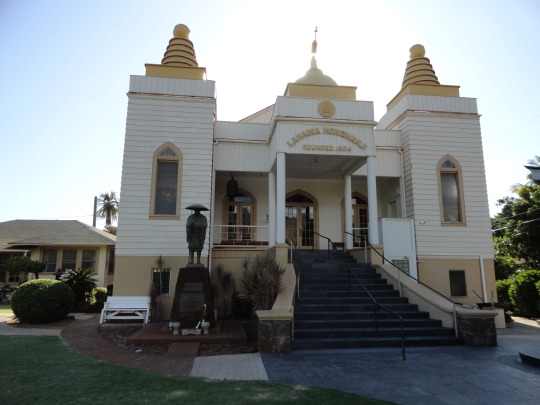
A terrible day for Hawaii and the Buddhist community. The wild fire killed dozens of people and destroyed Lahaina, including the historic and beloved Lahaina Hongwanji Mission (Jodo Shinshu, founded in 1904), Lahaina Jodo Mission (Jodo Shu, founded in 1912), and Lahaina Hokoji Shingon Mission (Shingon Shu, founded in 1902). These three temples have been central places of community, refuge, culture, and support for generations of Japanese Americans and others. The Shingon temple was the first outside of Asia. The Jodo one featured a three-story pagoda (rare outside of Asia) and replica of the famous Amida Daibutsu of Kamakura. The Jodo Shinshu temple sangha is especially large and active for the area, with over 70 member families. Information about how to support the Lahaina Buddhist community in the midst of this tragedy will be forthcoming.

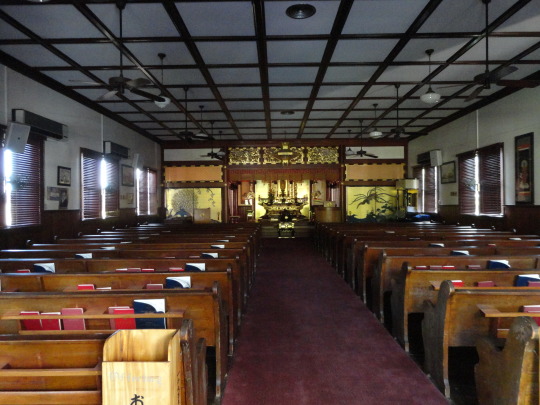
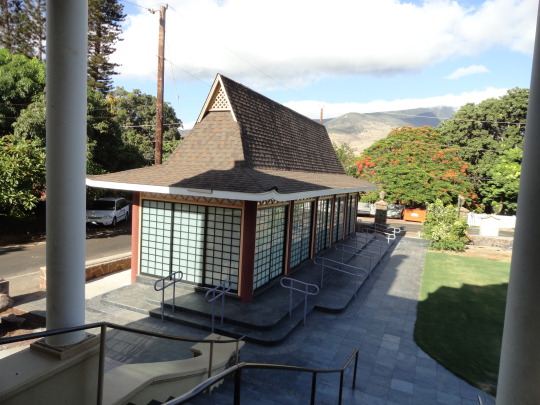


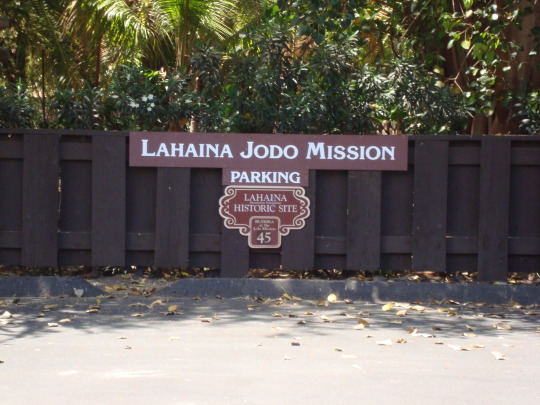
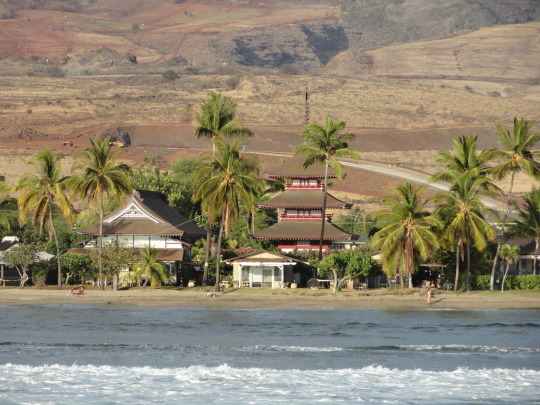


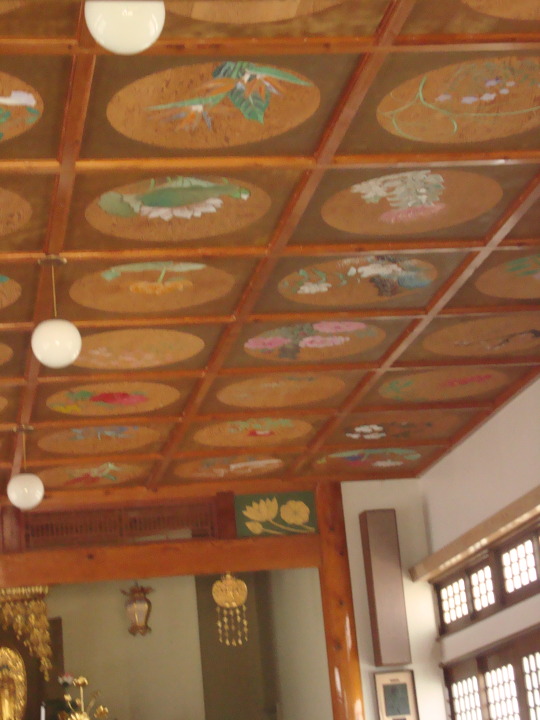

80 notes
·
View notes
Text
Il "Kyogyoshinsho" è un importante testo religioso giapponese scritto da Shinran, il fondatore di Jodo Shinshu. È considerato un testo fondamentale per la comprensione della dottrina della Terra Pura. Un titolo di un libro in inglese che parla del "Kyogyoshinsho" potrebbe essere "Introduction to the Kyogyoshinsho: Understanding the Teachings of Shinran".
0 notes
Text

Amitabha “Infinite Light” Talon Abraxas
Amitabha Buddha | Amitayus
The great savior Buddha is known as Amitabha (Sanskrit: “Infinite Light”), also known as Amitayus (“Infinite Life”), Japanese Amida, and Chinese Emituo Fo in Mahayana Buddhism, particularly in the so-called Pure Land sects. According to the Sukhavati-vyuha-sutras, which serve as the foundational texts for the Pure Land sects, a monk by the name of Dharmakara took several vows, the 18th of which stated that upon his attaining Buddhahood, all who had faith in him and invoked his name would be reborn in his paradise and would live there in bliss until they attained enlightenment. Dharmakara ruled as the Buddha Amitabha in the Western Paradise, also known as Sukhavati, the Pure Land, after fulfilling his vows.
In 650 CE, Amitabha’s devotion emerged in China. From there, it went to Japan, where it resulted in the establishment of the Pure Land school and the Real Pure Land school, both of which still have significant followings today. The late Heian era raig paintings of Japan depict Amitabha’s Pure Land and Amitabha descending to welcome the recently deceased in a beautiful way (897–1185).
In Tibet and Nepal, Amitabha is revered as one of the five “self-born” buddhas (dhyani-buddhas) who have existed eternally. Amitabha was never as well-known as a savior figure there as he was in East Asia. In accordance with this theory, he appeared as both the bodhisattva (“buddha-to-be”) Avalokiteshvara and the historical Buddha Gotama. His color is red, his posture is one of meditation (dhyana-mudra), his symbol is a begging bowl, his mount is a peacock, his consort is Pandara, his family is Raga, his element is water, his sacred sound is “ba” or “ah,” his skandha (element of existence) is taste, his sense organ is the tongue, and his place in the body is the mouth.
Amitabha is referred to as Amitayus, or “Infinite Life,” since he bestows a long life. While the two names are frequently used interchangeably in China and Japan, the two forms are never confused in Tibet, where Amitayus is revered in a specific rite in order to live a long life. He is shown holding the ambrosia vase from which the jewels of eternal life spill while sporting ornaments, a crown, and other accessories.
Amitabha Buddha, also known as Amitayus or Amituofo, is a central figure in Mahayana Buddhism. He is considered one of the Five Dhyani Buddhas, along with Akshobhya, Ratnasambhava, Amoghasiddhi, and Vairochana. Amitabha is revered as the Buddha of Infinite Light and Infinite Life. He is believed to have created the Pure Land, a realm of perfect bliss and enlightenment, where beings can be reborn through the power of his grace and merit. This
Pure Land is known as Sukhavati or Dewachen.
The Pure Land tradition of Buddhism is particularly popular in China, Japan, and Korea, where it is known as Jodo, Jodo Shinshu, and Cheontae, respectively. Followers of the Pure Land tradition believe that by chanting Amitabha’s name, they can generate the necessary merit to be reborn in his Pure Land and attain enlightenment.
The name Amitabha means “Infinite Light,” and his image is often depicted with a halo of radiant light surrounding his head. He is also commonly depicted holding a vase, representing the nectar of immortality, and a lotus flower, symbolizing the purity of the Buddha’s teachings. Amitabha’s importance in Mahayana Buddhism is reflected in the fact that he is the focus of numerous sutras and texts, including the Amitabha Sutra and the Infinite Life Sutra. These texts describe the Pure Land in detail, including its geography, inhabitants, and the benefits of being reborn there.
In addition to his role as the Buddha of Infinite Light and Infinite Life, Amitabha is also regarded as a bodhisattva, a being who has chosen to postpone their own enlightenment in order to help others attain liberation from suffering. As such, he is often depicted surrounded by other bodhisattvas, including Avalokiteshvara, the bodhisattva of compassion, and Mahasthamaprapta, the bodhisattva of wisdom.
Overall, Amitabha Buddha is an important figure in Mahayana Buddhism, particularly in the Pure Land tradition. His teachings and his Pure Land offer a path to liberation and enlightenment for those who seek it.
Amitabha mantra
(Om Amideva Hrih)
14 notes
·
View notes
Text
You think I'm a good person?
If I were a good person, I would be able to accept the Buddha's wisdom without a shred of doubt.
If I were a good person, I would not delight in poison.
If I were a good person, I would do good selflessly, benefiting friends and enemies alike.
And if I were a good person, I would be free. I am not free.
I'm not a good person. That doesn't mean I'm some kind of serial killer or sociopath, going around manipulating and exploiting people for my own gain. But I live my life selfishly. I do things which should not be done, think things which should not be thought, and say things which should not be said.
It is because of this, not in spite of it, that Amida's Vow is the only path for me. I will not accomplish the Buddha Way. I cannot make the Bodhisattva Vows honestly, knowing I won't fulfill them. And this is precisely what makes me the target of the Vow. It actually makes it EASIER to go to the Pure Land because the Path of Birth Through the Nembutsu is designed that way. Shinran states "Even a good person can make it to the Pure Land. How much easier it is for the evil person to get there!"
My karma is heavy. I regret myself. Namu Amida Butsu.
21 notes
·
View notes
Text
The Three Pure Land Sutras
While writing a recent blog post, I realized that I had mentioned, but never explained, what the Three Pure Land Sutras are in the Buddhist tradition, and their significance to Mahayana Buddhism as a whole. Think of this as a handy reference post. I haven’t done one of these in a while. 😊 The Buddhist Canon When you think of most world religions, they are usually based on one or two books.…
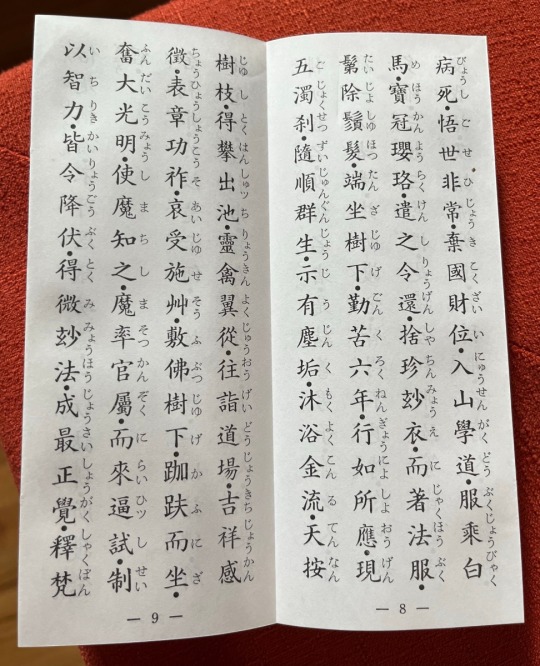
View On WordPress
11 notes
·
View notes
Text
Two Arrows
I love the Buddhist concept of the Two Arrows:
The first arrow is the bad thing that happens to you. You can't control this arrow. It hits you and hurts.
The second arrow is defined by your reaction to the first arrow. You can control this arrow. It doesn't have to hit you.
Lesson: We can't control most of the negative events in life, but we can control our reactions to them. We can handle the second arrow.
from sahilbloom on threads.net
#bcsf#buddhist church of san francisco#buddhistchurchofsanfrancisco#buddhism#jodo shinshu#second arrow#buddha#buddhist
3 notes
·
View notes